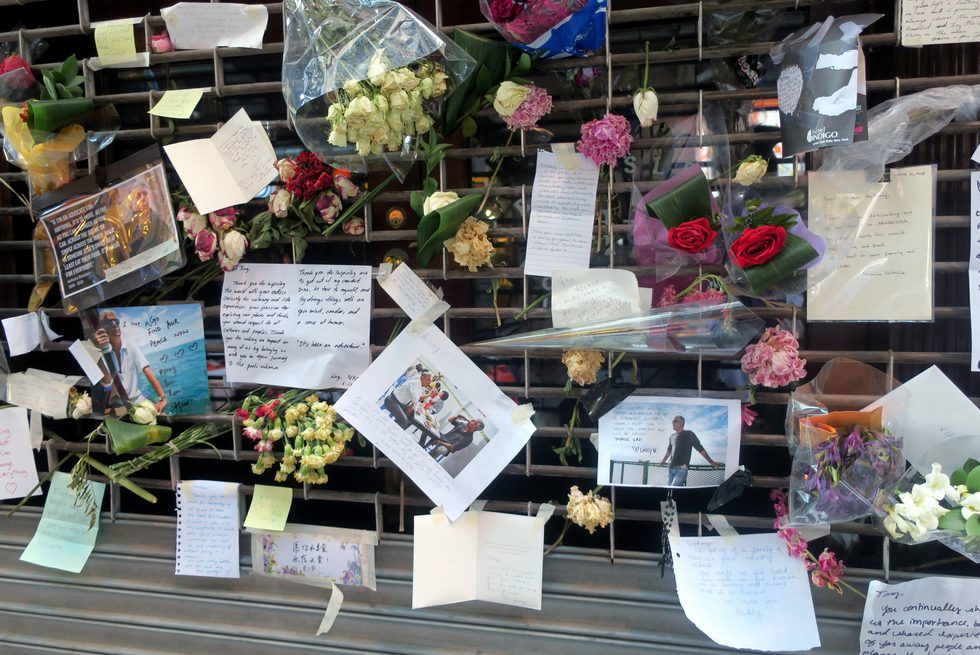
How do various emotional responses emerge out of rituals of public mourning? This was the question examined in various contexts by the panel “Mass Mourning: Objects, Affects, Publics” at the 2012 annual meeting of the American Anthropological Association.
Zoe Crossland examined these issues in relation to a fire at a royal palace in highland Madagascar. Examining the varying local meanings of the burned palace, as well as the broader local history of political firemaking, Crossland demonstrated that the burning of the palace constituted a direct attack on the physical traces of the colonial past and that past’s ability to impact the future. Conventionally, mourning is thought of as an exercise in remembering the past. Crossland, however, urged us to consider mourning not only as an exercise in recognizing a specific version of the past, but also as a form of grieving for a lost future. In examining these arsons, Crossland suggested a way of speaking about the future that is not tethered to notions of progress.
Shannon Lee Dowdy took the sorts of “votive litter” that have come to dominate impromptu memorials after the sudden deaths of celebrities as a point of entry into similar questions of temporality. The ephemeral nature of such impromptu memorials, Dowdy argues, differs significantly from the established views of more permanent memorials and shrines. For Dowdy, these ephemeral memorials hold the power to disrupt people’s regular spatial and temporal experiences of the city in ways that more permanent memorials cannot.
The question of just who or what is the object of mass mourning was the central concern of Alexei Yurchak’s paper, read in absentia by Jeremy Walton. Yurchak’s paper exmined the body politic’s relation to the dead body of Vladimir Lenin. In contrast to the Christian tradition, which values the material continuity of the body as the index of identity, Lenin’s body is preserved in form only, with new materials added to the corpse to maintain the precise form of the body at the moment of death. The figure preserved, Yurchak argued, is thus not Lenin the man but the author of Leninism, which is an artifact of the Stalinist state.
William Mazzarella looked at a similarly elaborate state-orchestrated ritual of mass mourning, the death of Kim Jong Il. For Mazzarella, however, what was notable in such rituals was less the mourning itself and more the Western media’s skeptical reaction to highly emotional displays of mourning on the part of North Koreans. On the one hand, media outlets conveyed skepticism of the mourners’ sincerity; on the other hand, they marveled at the ways the totalitarian state had successfully brainwashed an ignorant public. Mazzarella used this contradiction to examine the media itself, asking if the Western media might themselves be mourning the loss of Kim, who served as an important mirror for their own liberal worlds.
Tamara Kneese detailed an emerging set of practices designed to prolong one’s lifetime through digital inscriptions. This involves everything from the planning for postmortem presence on social networks all the way to archiving digital copies of one’s DNA. Such efforts, Kneese argues, have the effect of reducing the phenomenological experience of humans to code. In the process, they value the primacy of networks over liberal human subjectivity, raising a host of new questions about the ways the living interact with the dead.
In his discussion of the panel, Thomas Laqueur pointed out that mass mourning is a relatively recent phenomenon, dating perhaps back to the eighteenth century. Nonetheless, he argued, the panel touched on a theme universal to the human experience: the veneration of the dead.
Laqueur’s discussion points the way toward future avenues for researching public rituals of mass mourning. Anthropologists have long studied rituals of mourning in diverse cultural contexts. But is there something particular about the ways that modern, liberal, and secular states publicly mourn? What do such rituals tell us about larger political, economic, and social forces? The panelists of this panel provide an important starting point for anyone interested in these questions.